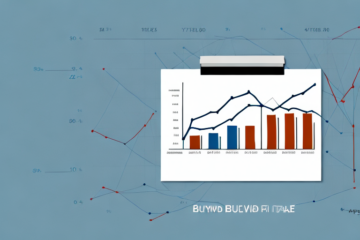Understanding 12B-1 Funds: A Guide to Common Finance Terms
12B-1 funds, or mutual funds with an ongoing sales charge, are a topic that many investors may not fully understand. In this guide, we will explore everything you need to know about 12B-1 funds, including how they work, the history behind them, fees associated with them, pros and cons of investing in 12B-1 funds, how to choose the right ones, and much more.
What are 12B-1 funds and how do they work?
12B-1 funds are mutual funds that come with an ongoing sales charge known as a 12B-1 fee. These fees are typically used to cover marketing and distribution expenses associated with the fund. They are also used to pay commissions to financial advisors who sell these funds to their clients.
The concept of 12B-1 fees was introduced in 1980 as a way to help mutual fund companies gain more assets. The idea was that these fees would help cover the costs of marketing, advertising, and distributing funds, which in turn would attract more investors.
When you invest in a 12B-1 fund, a portion of your investment will go towards paying this ongoing fee. The fee is typically a percentage of your investment amount, and it can range from 0.25% to 1% per year. The higher the fee, the more it will eat into your investment returns over time.
It’s important to note that not all mutual funds come with 12B-1 fees. Some funds may charge a one-time sales charge, also known as a front-end load, while others may have no sales charges at all. It’s important to carefully review the fees and expenses associated with any mutual fund before investing to ensure that you understand the costs and how they may impact your returns.
The history of 12B-1 funds in the financial industry
The use of 12B-1 fees in mutual funds has been controversial since its inception. Critics argue that these fees can lead to conflicts of interest for financial advisors who may be incentivized to recommend funds with higher fees. Additionally, some believe that these fees are simply a way for mutual fund companies to generate more revenue.
Despite these criticisms, 12B-1 funds continue to be a common investment option for many investors. In fact, many funds that existed before the introduction of 12B-1 fees have since adopted them as a way to generate additional revenue.
One of the main arguments in favor of 12B-1 fees is that they can help to cover the costs of marketing and distribution for mutual funds. Without these fees, investors may not have access to certain funds or may have to pay higher upfront fees to cover these costs.
However, some investors may not be aware of the 12B-1 fees associated with their mutual funds, as they are often included in the fund’s expense ratio. This lack of transparency has led to calls for greater disclosure and regulation of these fees in the financial industry.
The different types of fees associated with 12B-1 funds
There are several different types of fees associated with 12B-1 funds. In addition to the ongoing sales charge, there may also be other fees, such as management fees, transaction fees, and front-end or back-end loads.
The management fee is an annual fee charged by the mutual fund company to manage the fund. This fee is typically a percentage of the fund’s assets, and it covers the cost of investment management, research, and other expenses associated with managing the fund.
Transaction fees, on the other hand, are charged when you buy or sell shares of the fund. These fees are typically small, and they help cover the costs of processing the transaction.
Front-end and back-end loads are sales charges that are either charged when you buy shares of the fund (front-end) or when you sell them (back-end). These fees can be in addition to the ongoing 12B-1 fee.
It’s important to note that the fees associated with 12B-1 funds can vary widely from one fund to another. Some funds may have higher management fees, while others may charge higher transaction fees or front-end loads. It’s important to carefully review the fees associated with any mutual fund before investing, to ensure that you understand the costs involved and can make an informed decision about whether the fund is right for you.
Pros and cons of investing in 12B-1 funds
As with any investment option, there are pros and cons to investing in 12B-1 funds. One benefit is that these funds often offer a wider range of investment options than other types of mutual funds. This can be helpful for investors who are looking for specific types of investments.
However, the ongoing 12B-1 fee can also be a downside for some investors. This fee can eat into your investment returns over time, and it may not be worth it for investors who are looking for low-cost investment options.
Additionally, there can be conflicts of interest when financial advisors are receiving commissions for selling these funds to their clients. It’s important to do your own research and make sure that any investment recommendations align with your own financial goals and needs.
Another potential downside of investing in 12B-1 funds is that they may have higher expense ratios compared to other mutual funds. This means that investors may be paying more in fees for the management and administration of the fund. It’s important to consider the overall cost of investing in a 12B-1 fund and weigh it against the potential benefits before making a decision.
How to choose the right 12B-1 fund for your investment goals
When choosing a 12B-1 fund, it’s important to consider several factors. Your investment goals, risk tolerance, and time horizon should all be taken into account when selecting a fund.
You should also consider the fees associated with the fund and how they will impact your investment returns over time. Look for funds with lower expenses and fees, as these can have a big impact on your long-term returns.
Additionally, research the fund’s investment strategy and performance. Look at historical returns and compare them to other funds in the same category. This can give you a better idea of how the fund has performed in the past and how it might perform in the future.
The impact of 12B-1 fees on investment returns
The ongoing 12B-1 fee can have a significant impact on your investment returns over time. This is because the fee is deducted from your investment on an ongoing basis, which means that it can compound over time and reduce your overall returns.
For example, if you invest $10,000 in a fund with a 1% 12B-1 fee, you will pay $100 per year in fees. Over 10 years, this adds up to $1,000 in fees. That’s $1,000 less in investment returns that you could have had if you had invested in a fund with no 12B-1 fee.
Comparing 12B-1 funds to other mutual fund options
There are many different types of mutual funds available to investors, and it’s important to compare them to 12B-1 funds before making a decision. Index funds, for example, are a popular alternative to 12B-1 funds. They typically have lower fees and can offer similar or better returns than actively managed funds.
Additionally, exchange-traded funds (ETFs) are also becoming more popular among investors. These funds are similar to mutual funds but trade on an exchange like a stock. They often have lower fees and can offer more flexibility in terms of trading.
Another option to consider when comparing mutual funds to 12B-1 funds is target-date funds. These funds are designed to automatically adjust their asset allocation as the investor approaches their target retirement date. This can be a convenient option for those who want a hands-off approach to investing for retirement.
Understanding the role of financial advisors in recommending 12B-1 funds
Financial advisors can play an important role in helping investors choose the right investment options for their needs. However, as mentioned earlier, conflicts of interest can arise when financial advisors receive commissions for recommending certain funds, including 12B-1 funds.
It’s important to make sure that your advisor is acting in your best interests and not simply recommending funds that will generate higher commissions. Additionally, consider working with a fee-only advisor who does not receive commissions for recommending specific funds.
When considering investing in 12B-1 funds, it’s important to understand that these funds typically have higher fees than other types of mutual funds. These fees are used to cover marketing and distribution expenses, which can ultimately reduce the returns on your investment. Before investing in a 12B-1 fund, make sure to carefully review the fees and compare them to other investment options to ensure that it’s the right choice for your portfolio.
Tips for minimizing expenses when investing in 12B-1 funds
If you do choose to invest in a 12B-1 fund, there are several ways to minimize the fees and expenses associated with the fund. Consider investing in funds with lower expense ratios, and look for funds with no front-end or back-end loads.
Additionally, consider investing directly with the mutual fund company instead of going through a financial advisor. This can help reduce the fees and expenses associated with the fund.
Another way to minimize expenses when investing in 12B-1 funds is to invest in index funds instead of actively managed funds. Index funds typically have lower expense ratios and can help you save money in the long run.
It’s also important to regularly review your investments and make adjustments as needed. If you notice that a particular 12B-1 fund is consistently underperforming, it may be time to consider switching to a different fund with better returns and lower fees.
How to monitor and evaluate the performance of your 12B-1 fund portfolio
Monitoring and evaluating the performance of your 12B-1 fund portfolio is an important part of investing. Keep track of the fund’s performance over time and compare it to other funds in the same category.
Additionally, consider rebalancing your portfolio periodically to ensure that your investments are aligned with your investment goals and risk tolerance. This can help minimize risk and maximize returns over time.
An overview of regulators’ views on the use of 12B-1 fees in mutual funds
Regulators have been taking a closer look at the use of 12B-1 fees in mutual funds in recent years. The Securities and Exchange Commission (SEC), for example, has proposed new rules that would require mutual fund companies to disclose more information about these fees to investors.
Additionally, some regulatory agencies are exploring the idea of eliminating 12B-1 fees altogether. This could lead to lower costs for investors and greater transparency in the mutual fund industry.
However, some industry experts argue that eliminating 12B-1 fees could have unintended consequences. These fees are often used to compensate financial advisors who provide valuable guidance to investors. Without these fees, some advisors may be less likely to recommend mutual funds to their clients, which could limit access to these investment vehicles for some investors.
Furthermore, some mutual fund companies argue that 12B-1 fees are necessary to cover the costs of marketing and distributing their funds. Without these fees, they may have to raise other fees or reduce services, which could ultimately harm investors.
Common misconceptions about 12B-1 funds debunked
There are several common misconceptions about 12B-1 funds that can lead investors astray. One common misconception is that all 12B-1 funds are actively managed. In reality, there are both actively managed and passively managed 12B-1 funds available to investors.
Additionally, some investors believe that 12B-1 funds are the only mutual fund option available. In reality, there are many different types of mutual funds available, including index funds and ETFs.
Another common misconception about 12B-1 funds is that they are always more expensive than other mutual fund options. While it is true that 12B-1 funds may have higher fees due to the marketing and distribution expenses, there are also low-cost 12B-1 funds available to investors.
It is also important to note that 12B-1 fees are not the only fees associated with mutual funds. Investors should also consider expense ratios, transaction fees, and other costs when evaluating mutual fund options.
Comparing and contrasting the impact of high vs low expense ratios on mutual fund performance
Expense ratios can have a significant impact on mutual fund performance over time. Funds with higher expense ratios tend to have lower net returns, while funds with lower expenses tend to perform better.
For example, a fund with a 2% expense ratio would need to earn a return of 10% per year just to match the return of a fund with a 1% expense ratio and an 8% return. Over time, this can add up to thousands of dollars in lost investment returns.
It is important to note that expense ratios are not the only factor to consider when choosing a mutual fund. Other factors such as the fund’s investment strategy, historical performance, and management team should also be taken into account.
Additionally, some investors may be willing to pay a higher expense ratio for a fund that aligns with their personal values or beliefs, such as a socially responsible investment fund.
Tax implications associated with investing in 12b-1 mutual funds
Investing in 12B-1 funds can have tax implications for investors. When the fund earns income, this income is typically passed on to investors in the form of dividends or capital gains distributions.
These distributions are typically subject to taxes, which can reduce your overall investment returns. Additionally, if you hold the fund in a taxable account, you may be subject to capital gains taxes when you sell the fund.
It’s important to understand the tax implications associated with any investment option before making a decision. Consider speaking with a tax professional or financial advisor if you have questions or concerns about the tax implications of investing in 12B-1 funds.
Another important factor to consider when investing in 12B-1 funds is the potential for higher fees. These funds often have higher expense ratios compared to other mutual funds, which can eat into your investment returns over time. It’s important to weigh the potential benefits of investing in a 12B-1 fund against the higher fees and tax implications to determine if it’s the right investment option for you.
Conclusion
Investing in 12B-1 funds can be a good option for some investors, but it’s important to understand all of the fees and expenses associated with these funds before making a decision. Consider factors like investment goals, risk tolerance, and time horizon when selecting a fund, and look for funds with lower expenses and fees to help maximize your investment returns over time.
It’s also worth noting that 12B-1 fees can vary widely between funds, so it’s important to do your research and compare different options before investing. Additionally, some investors may prefer to avoid 12B-1 funds altogether and opt for index funds or other low-cost investment options.
Ultimately, the decision to invest in a 12B-1 fund should be based on your individual financial situation and investment goals. By carefully considering all of the factors involved and doing your due diligence, you can make an informed decision that will help you achieve your long-term financial objectives.










